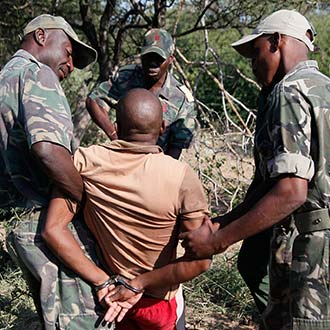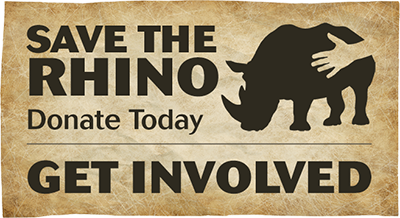Rhino poaching – the first response!
What happens when we get the news that a rhino has been poached and is still alive? Rhino poaching scenes can be devastating and survivors need immediate access to life-saving veterinary treatment. Initial treatment often focuses on providing pain relief, giving antibiotics, and cleaning and assessing poaching wounds.
 Arriving at a poaching scene never gets easier, the horror of the attack and the responsibility involved in being the first vet on the scene can weigh heavily on your shoulders. If the poaching victim has died the focus quickly moves onto preserving the crime scene and working with law enforcement to ensure all available evidence is collected for a successful prosecution. A post mortem must be carried out to confirm the cause of death and a report is made for law enforcement.
Arriving at a poaching scene never gets easier, the horror of the attack and the responsibility involved in being the first vet on the scene can weigh heavily on your shoulders. If the poaching victim has died the focus quickly moves onto preserving the crime scene and working with law enforcement to ensure all available evidence is collected for a successful prosecution. A post mortem must be carried out to confirm the cause of death and a report is made for law enforcement.
If the rhino has survived the attack vets must work quickly and effectively to determine the mechanism of the poaching. With bullet wounds, X-ray machines and surgery equipment is often needed to assess the severity of the wounds under anesthesia. If the animal has been darted using veterinary drugs then vets must administer the antidote as soon as possible after the initial assessment has been carried out.
To determine whether a poaching victim is able to survive the long recovery an initial assessment needs to be carried out. This involves evaluation of the limbs to see if prolonged recumbency has damaged the muscles irreversibly, examination of the eyes to check for blindness caused by contact with the ground, and evaluation of blood work to check for irreversible organ damage. In addition, the facial wounds must also be examined to see if reconstructive surgery could be successful. Up until recently, poaching victims were often found dead due to inadequate monitoring and lack of tracking equipment. In response to the crisis many reserves have invested lots of time, manpower, and money into rhino protection, meaning the chances of finding a victim alive is increased. This means vets have had to work hard in the last few years to quickly develop strategies for working with injured rhino to improve their prognosis. More funding and research into poaching survivors will help to further develop effective treatment protocols so more poaching victims have a chance to survive.
This video records the first response treatment of Bingo, who was darted with veterinary drugs and poached in the night. Whilst his facial wounds were shocking it was his internal injuries that ultimately proved fatal. Initial examination showed that Bingo’s injuries might be survivable and antibiotics, pain relief and multivitamins were given to help him recover. Unfortunately, a few days later Bingo became blind and stumbled down a river bank where he got cut off by the rising water. Dr. Will Fowlds lead a team who spend all day building routes out of the river bed and desperately trying to lead Bingo to safety. As the river rose at the end of a physically and emotionally exhausting day, Bingo became at risk of drowning and the decision was made to put him to sleep and end his suffering.







